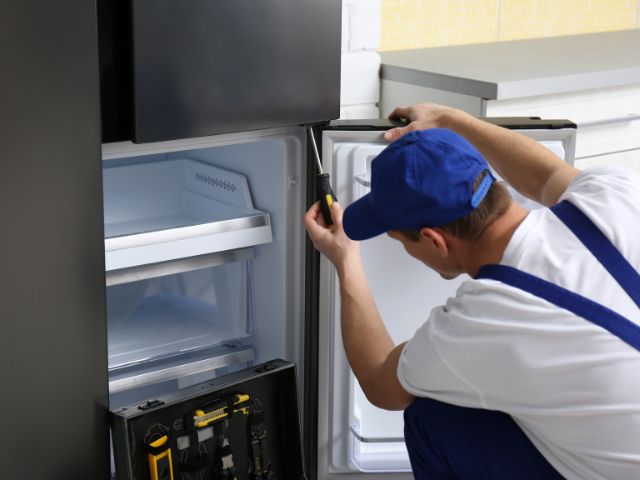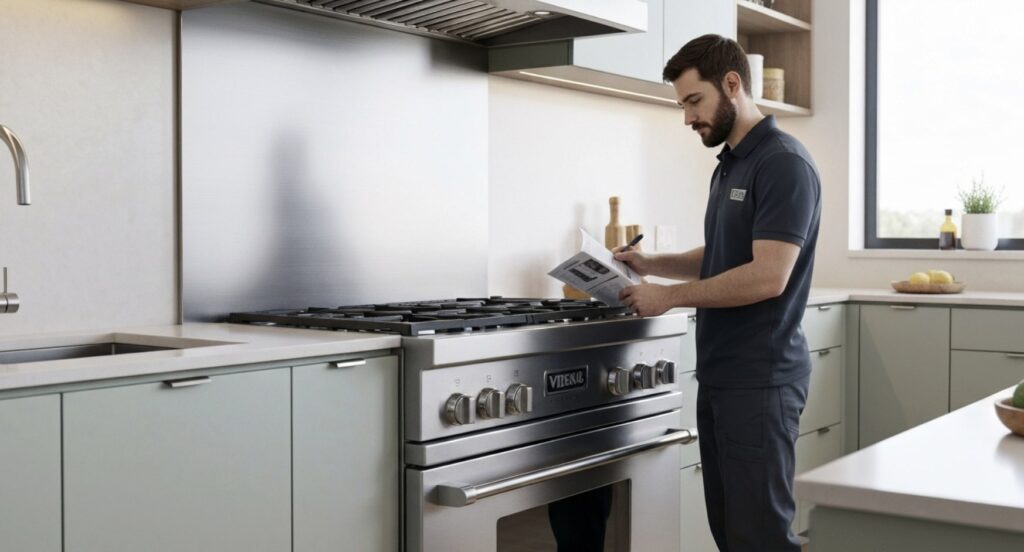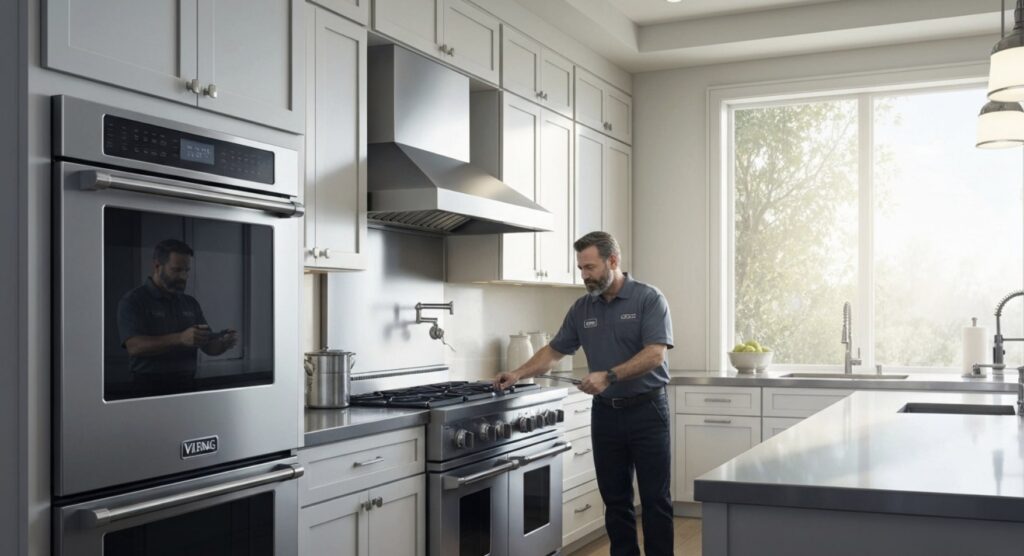A broken thermostat is a common reason your refrigerator might not work right. It can cause uneven cooling, food to spoil, or make your appliance use too much energy. While fixing a refrigerator may seem hard, changing the thermostat is something many homeowners can do by themselves. This easy guide, with help from experts, will make it simple. It can save you time, money, and even the food in your refrigerator.
Signs of a Faulty Thermostat
Before you grab your toolbox, make sure the thermostat really is the problem with your refrigerator. There are some signs that show there might be an issue. If your fridge is too cold and freezing your food, or if it’s not cold enough and can’t keep a steady temperature, the thermostat might be the cause.
Another warning sign is when the temperature inside your fridge changes, even if you set the dial correctly. If you see these signs, you might need to replace the thermostat. It’s not an expensive part, and changing it could save you money later on expensive repairs or the need for a new appliance.
Step-by-Step Guide to Replacing the Thermostat
Replacing your refrigerator thermostat is easier than you may believe. This guide will help you break down the process into small steps. You can now fix the problem with certainty. We will show you each part, from getting the tools you need to testing the new thermostat you installed.
Get ready to be your own appliance repair hero! With some patience and good advice, you will have your refrigerator working well again.
Gathering the necessary tools and materials
Having the right tools makes fixing things easier. Before you start changing your thermostat, gather these important items:
- Replacement Thermostat: Find your refrigerator’s model number. You can usually see this inside the fridge or on the back. This will help you pick the right thermostat.
- Screwdriver: Look at the screws on the control panel of your fridge. This will tell you what kind of screwdriver you need (Phillips or flathead).
- Work Gloves: It’s important to keep your hands safe from sharp edges and cold temperatures inside the fridge.
By getting these items ready, you can work better and stay safe while you fix it.
Safety precautions to keep in mind
Working with any electrical appliance needs care. Before you replace your thermostat, keep safety in mind with these steps:
Disconnecting the power supply
Before you start fixing your refrigerator, it is very important to unplug it to avoid electrical shock and keep yourself safe.
Look for the power cord, which is normally plugged into a wall outlet. Gently pull the plug out of the outlet. If it’s hard to reach or you are not sure, it’s safer to turn off the circuit breaker that controls your fridge. The circuit breaker box is usually found in a utility room or the basement.
After you have made sure the power is off, you might want to stick a note on the refrigerator. This will help remind others not to turn the power back on while you are still working.
Removing the old thermostat
With the power turned off, find the thermostat control panel inside your fridge. Start by pulling off the control knob. Next, you will see some screws that hold the control housing to the fridge. Remove these screws carefully, and support the housing so it does not fall.
Now, lower the control housing to see the thermostat and its sensing tube. Gently free the brackets that hold them in place. Be careful not to harm any wiring. If the sensing tube has a sleeve for insulation, take it off and keep it for the new thermostat.
Take a photo of how the wires are connected, or label them. This will help you connect the new thermostat correctly. Lastly, disconnect the wires and take out the old thermostat.
Installing the new thermostat
When you get the replacement thermostat, start by unplugging the fridge. Find the current thermostat inside the freezer. Carefully disconnect everything and take out the old thermostat. Then, place the new thermostat in the same spot. Make sure all connections are tight before you plug the appliance back in. Lastly, keep an eye on the temperature to check if the thermostat is working well. This important step helps your fridge cool properly and work efficiently.
Testing the new thermostat
- With the new thermostat installed and the control panel back together, it’s time for the next step. Plug your fridge back in or turn the circuit breaker on to restore power. Give the appliance a few minutes to start up fully.
- Set your preferred temperature on the thermostat dial. Be sure to check your fridge manual for the best settings. Place a thermometer inside the fridge to check how cool it is.
- Let the fridge take a few hours to adjust to the new temperature. Check the thermometer to see if the internal temperature matches what you set. If everything is good, your fridge is now cooling as it should!
Seeking professional help from Viking Appliance Repair Pros
While replacing a refrigerator thermostat is often manageable for DIY enthusiasts, some situations warrant professional assistance. If you encounter difficulties during any stage of the repair, don’t hesitate to seek help from experienced appliance technicians.
Viking Appliance Repair Pros are experts in handling a wide range of appliance issues. Our skilled technicians have the knowledge and tools to diagnose and resolve complex problems efficiently. In addition to thermostat replacements, we offer comprehensive appliance repair services, ensuring your appliances are in safe hands.
Conclusion
In conclusion, performing refrigerator thermostat replacement on your own can be easy if you have good advice and follow some care. By sticking to the steps mentioned above, you can keep your refrigerator working well. Always think about safety first, collect the tools you need, and ask for professional help if necessary. For more tips on taking care of your appliances, visit our blog on Troubleshooting Refrigerator Water Dispenser Problems.
Frequently Asked Questions
Are there different types of thermostats available for refrigerators, and how do you choose the right one?
Yes, refrigerators have different types of thermostats. You can check your appliance manual or search for the model online to find the right replacement type. Buying the correct thermostat helps make sure it works well and fits properly.
How often should you consider replacing the thermostat in your refrigerator for optimal performance?
If your refrigerator often has temperature problems that you can’t fix, think about replacing the thermostat. You don’t need to replace it regularly. A new thermostat can help your appliance cool better and last longer.
What are the potential risks or complications associated with replacing a refrigerator thermostat?
Incorrect wiring is a big risk. Always double-check your connections. If you are not sure about something, look at your appliance manual or ask a professional for help. Also, make sure to disconnect the power supply. This can help you avoid electric shock.






